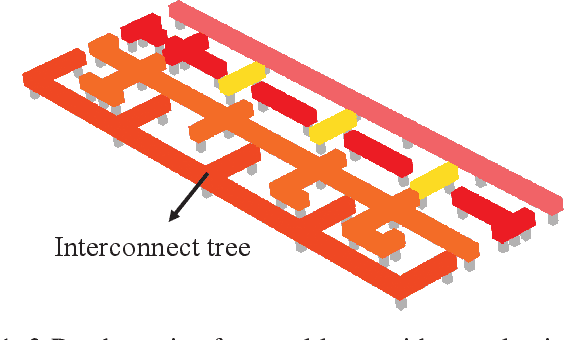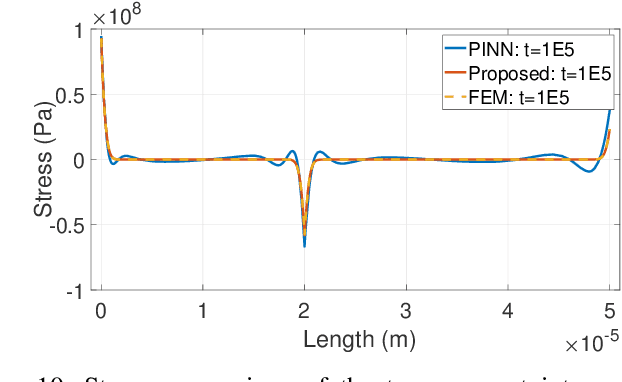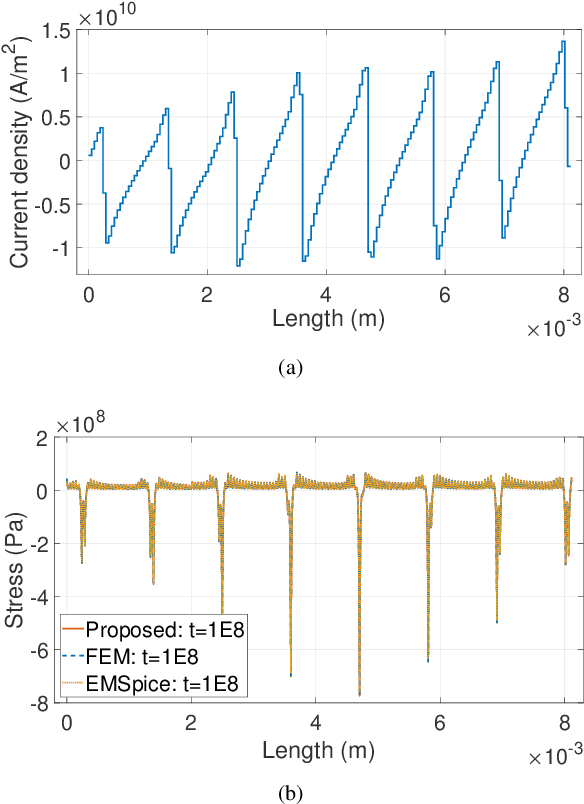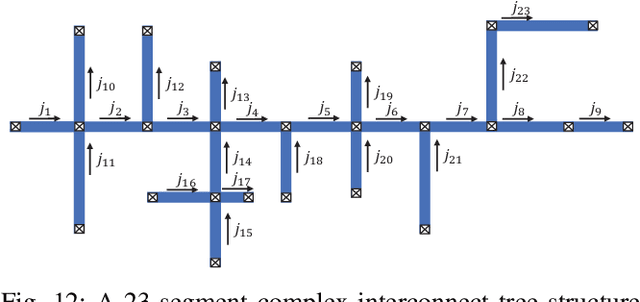Multilayer Perceptron Based Stress Evolution Analysis under DC Current Stressing for Multi-segment Wires
Paper and Code
May 17, 2022



Electromigration (EM) is one of the major concerns in the reliability analysis of very large scale integration (VLSI) systems due to the continuous technology scaling. Accurately predicting the time-to-failure of integrated circuits (IC) becomes increasingly important for modern IC design. However, traditional methods are often not sufficiently accurate, leading to undesirable over-design especially in advanced technology nodes. In this paper, we propose an approach using multilayer perceptrons (MLP) to compute stress evolution in the interconnect trees during the void nucleation phase. The availability of a customized trial function for neural network training holds the promise of finding dynamic mesh-free stress evolution on complex interconnect trees under time-varying temperatures. Specifically, we formulate a new objective function considering the EM-induced coupled partial differential equations (PDEs), boundary conditions (BCs), and initial conditions to enforce the physics-based constraints in the spatial-temporal domain. The proposed model avoids meshing and reduces temporal iterations compared with conventional numerical approaches like FEM. Numerical results confirm its advantages on accuracy and computational performance.
 Add to Chrome
Add to Chrome Add to Firefox
Add to Firefox Add to Edge
Add to Edge